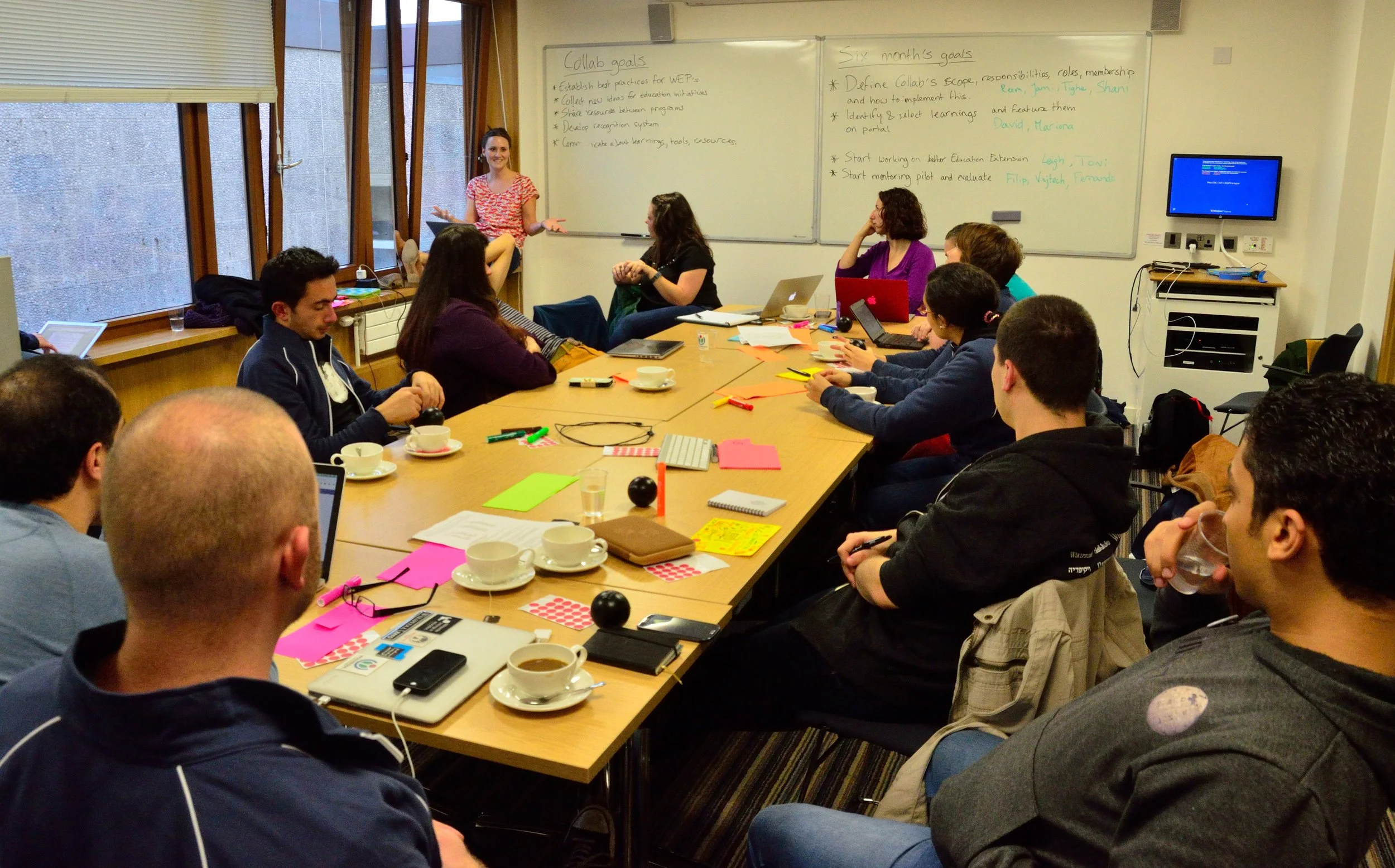Can We Work Together Better?
Education Collaborative meeting in Edinburgh. Taken by Fedaro, CC BY-SA 4.0, https://commons.wikimedia.org/w/index.php?curid=36660372
I have a workshop coming up on November 2 that I am really excited to share. It grew out of my collaboration last spring with Reka Peterson and her team at River Valley Co-op to produce a webinar on nervous system healing. (If you're not familiar with River Valley's excellent community webinar series, check it out here!)
Reka noticed a line in my bio about having co-written a book many years ago describing tools for helping groups work together. She got curious and checked it out of the library and then invited me to a conversation about creating a workshop for our local community. I was so thrilled.
Helping groups work together is one of my lifelong passions. When I was a young activist and community organizer, it really frustrated and dismayed me how often groups of well meaning, like-minded people exploded in what seemed like really unnecessary conflicts.
I was part of activist groups who struggled to make strategic choices in deeply constrained situations, a food co-op trying to stay true to its radical communitarian routes in an increasingly competitive grocery industry, and an otherwise wonderful all-volunteer community organization that routinely threw out its exhausted leaders for perceived betrayals.
I watched people at meetings grandstanding about who was being insufficiently inclusionary, and I saw groups repeatedly fragment after difficult discussions produced inconclusive results and people walked away feeling unheard and bitterly disappointed.
Surely there has to be a way that people who share similar values and goals can collaborate without things blowing up every few months, I thought. And I began seeking opportunities to study meeting facilitation.
After several years of mentoring and practice in community organizing settings, I got the chance to study in Eastern Mennonite University's program on Peacebuilding and Conflict Transformation. There I co-authored Cool Tools with professor Ron Kraybill. Ron's observation, after years in the field helping groups work through very intense conflicts, was that very simple meeting tools can help groups better listen to each other and really hear each other into transformation.
Today I would say that these tools help settle the group's nervous system.
Groups get anxious for all kinds of reasons. Individuals, of course, can get riled up if the topic is upsetting, or we care deeply about the discussion's outcome, or we aren't confident we'll be heard. And because our nervous systems are tuned to and constantly reading each other, each person's upset and agitation can quickly travel through the group, impairing everyone's ability to listen well and respond creatively.
More subtly, for all but the simplest issues, it can be difficult for a group to even decide clearly what aspect of the problem to focus on. Some people are ready to start nailing down implementation details for a solution that sounds workable, while others need to continue exploring risks and strategies. The uncertainty over how to even approach the discussion adds another layer of agitation to the group's mood.
Meeting tools can't magically smooth over difficult topics or personality conflicts, but by helping everybody focus on one thing at a time, and know for sure when it will be their turn to provide input, structured discussion processes help keep the level of anxiety and frustration in the group low, so everyone can think and listen more clearly. They can help balance participation among folks with different personalities, cognitive styles, and levels of explicit and implicit power in the group. And over time, they help create a group culture of effectiveness, respect, and confidence in the ability to collaborate.
At the workshop we'll learn and practice a few simple tools that anyone can use. We'll explore how the simple circle process – or go-around – can be used for a lot more than just check-ins, when and how to use small groups to work through complicated issues or generate strategies, and what to do after a brainstorming session with the big list of ideas people are really excited about but don't quite know what to do with next.
We'll break down how each tool works to meet group goals, and help you assess which ones might be most helpful in various situations. You'll leave prepared to choose the right tool and confidently run it in your next meeting.
It will be a lively and fun hour-and-a-half workshop, and it's free! So come join us if you have any meetings in your life that you really wish were a little better. Register at River Valley.
Try this: Use structured rounds to explore an issue
The next time you have a thorny issue to explore together, rather than just opening up discussion, try a series of structured rounds. Pose a clear, but open-ended question or theme. Set a brief time limit – one to two minutes is often enough when folks know they will have several chances to speak – and appoint a time keeper to give a gentle notice when time is up.
Use a series of questions that help people go deeper into the issue with each round, and move from feelings into evaluation and ideas. For example:
Round 1: my concerns or fears about this issue
Round 2: my hopes about the best possible way forward
Round 3: having heard all this, an idea I have about what we could do
Using rounds might feel awkward or overly formal at first, but it often enables more efficient discussion, better listening, and even a remarkable sense of clarity about the group mind.

